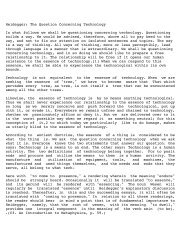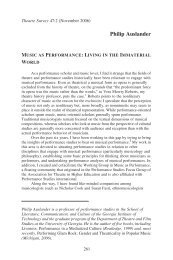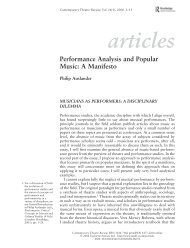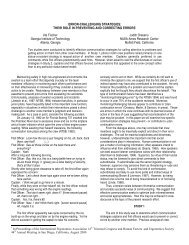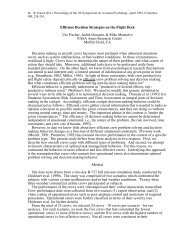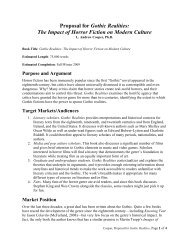INTERACTION DESIGN PRINCIPLES FOR INTERACTIVE ...
INTERACTION DESIGN PRINCIPLES FOR INTERACTIVE ...
INTERACTION DESIGN PRINCIPLES FOR INTERACTIVE ...
Create successful ePaper yourself
Turn your PDF publications into a flip-book with our unique Google optimized e-Paper software.
applications based on the television, iTV applications must be navigable using only a<br />
remote control, with the four directional arrow keys and a select key. With the navigation<br />
limited in this way, designers must take special care in the arrangement of navigable and<br />
selectable objects on the screen. For example, it may be a good idea to group functional<br />
buttons into one column and navigational buttons into another. Thus, moving from one<br />
group to the other requires only one click to the left or right. The BBC is a bit more<br />
constrictive and actually recommends that designers limit navigation to only one axis –<br />
either forward/back or up/down (British Broadcasting Corporation, 2002).<br />
In general, iTV designers should minimize the number of clicks that the user must<br />
press in order to navigate through the application. As well, these activities should not take<br />
the user too far away from the primary screen. According to research conducted by See &<br />
Woestendiek, environments with a depth greater than four often become disorienting and<br />
confusing to the user (1987). Taking users too far away from the primary screen increases<br />
the chances that they will become distracted or frustrated with the application.<br />
Dale Herigstad, who designed the interaction for the Queer Eye for the Straight<br />
Guy prototype at the 2004 AFI workshop, explains that his design purposefully attempted<br />
to move away from “the ‘page model.’ As illustrated by Figure 5.41, instead of clicking<br />
from page to page, the design keeps you in one kind of space, but one that is fluid, so that<br />
you click one thing and it generates something else. The design is all about transition”<br />
(quoted in Swedlow, 2004b). In another one of his designs, Woodrow Wilson, the<br />
timeline-based navigational structure that persists along the bottom edge of the<br />
application ensures that users never navigate outside of the iTV space or away from a<br />
familiar point (see Figure 5.42).Yet a third tactic may be to employ the picture-in-picture<br />
164



